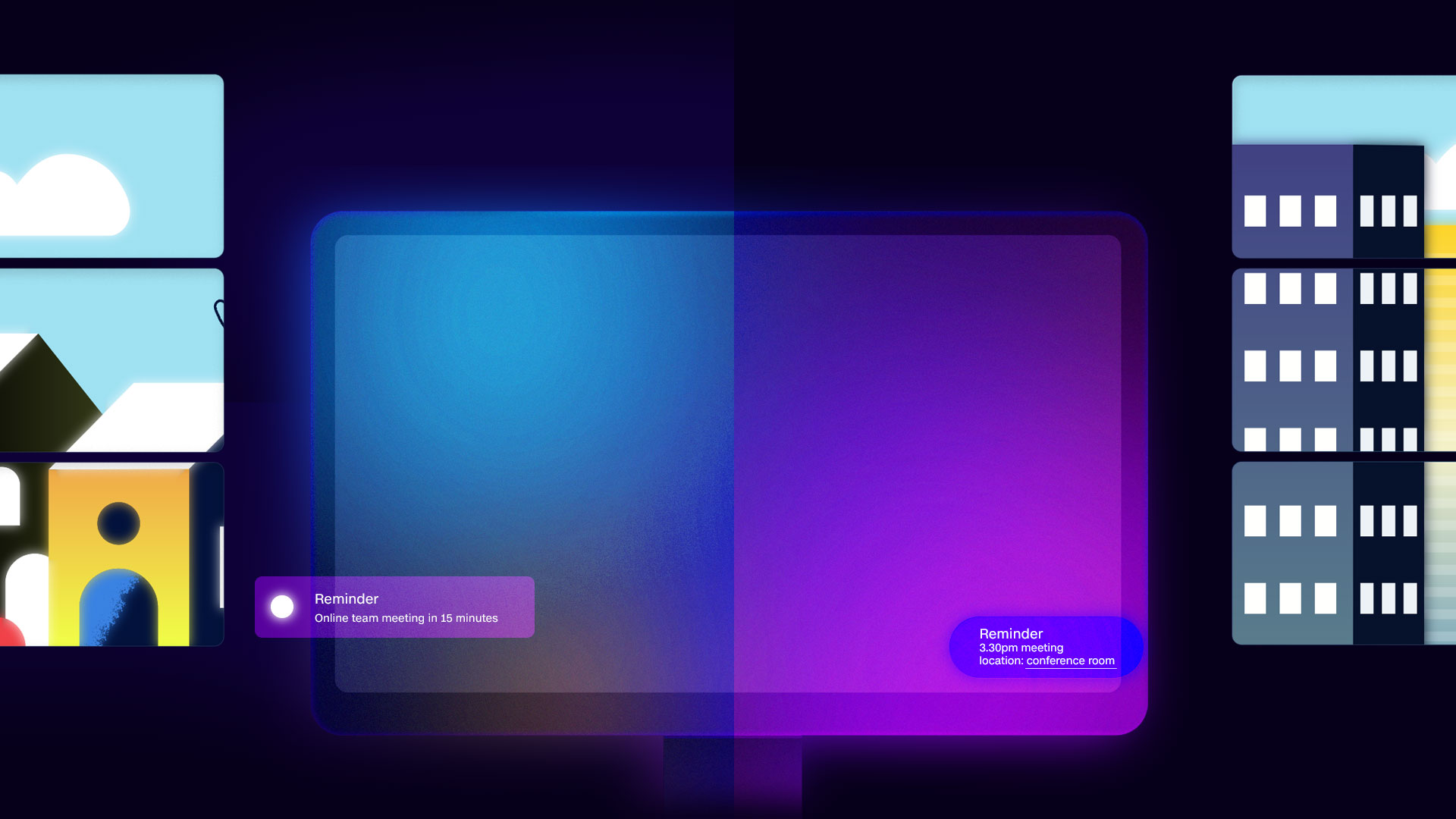
Business etiquette for a new world
The future of infrastructure and interaction
As the world adjusts to new workplace dynamics, businesses have a huge opportunity to make decisive, forward-thinking changes to the environments they’re creating and the tools their people are utilizing.

Listen to employee demand
When thinking about the future of the office, the only reference point business leaders have is how the office used to be. However, it doesn’t have to be so black and white. Employees want flexibility. A recent Gartner survey shows that 83% want to work in either a remote or hybrid arrangement, which means the office is going to have to exist alongside multiple ways of working.
Get it right and employees will have the spaces they need to thrive. In fact, a human-centric work design that features flexible work experiences, intentional collaboration opportunities, and empathic management can increase performance by as much as 54%.
In an article for Harvard Business Review, Lynda Gratton, Professor of Management Practice at London Business School and founder of the global research institute HSM Advisory, notes the additional benefits of this coexistence. “Given the extent to which most employees don’t want to revert to past ways of working, [companies] are seeing a once-in-a-lifetime opportunity to reset work using a hybrid model – one that will allow us to make our work lives more purposeful, productive, agile, and flexible.”
Flexible work experiences, intentional collaboration, and empathic management can increase employee performance by 54%.
Future of Work Reinvented, a study by Gartner

Redesign your office space
‘Hybrid’ will only work if two or more elements are brought together. Hence why the office still has a critical part to play in the future of work. Instead of a default place to do your job, the office can become a hub for in-person collaboration and social interaction.
Redesigning on-site spaces is necessary to reflect this cultural shift. As explained by Vaughan Klein, Senior Director of Collaboration EMEAR at Cisco, “we’re going to see a doubling in the number of meeting rooms as people look to increase their social currencies. These rooms should have the facilities your people want. They should be flexible, non-bookable, and walk-in.” This way, everyone can experience the freedom to choose where they work, and the spontaneity to choose how they do it.

Find a happy medium
When integrating the office into a hybrid model, the challenge “is not simply to optimize the benefits but also to minimize the downsides. Working from home can boost energy, but it can also be isolating, in a way that hinders cooperation. Working on a synchronous schedule can improve coordination, but it can also introduce constant interruptions that disrupt focus,” admits Gratton.
To overcome this challenge, business leaders should consider investing in a single software experience, like Webex by Cisco. Whatever an individual’s location, it ensures their working environment is as seamless as possible. Meetings, messaging, calling, and high-level collaborative workload are all possible within one application, and with the same network security as the office.

Innovate to communicate
As people set the pace of hybrid work, technology is running an entirely different race. “Our teams are looking at things people haven’t even thought of yet – solutions to problems that haven’t even been identified,” says Mark Needham, Hybrid Work and Workplace Transformation Leader at Cisco.
In the past two years alone, Webex has introduced over a thousand new features, functions, and products, spurred on by the shift in global working patterns. Effective communication, whether they’re in the same room or on opposite sides of the world, has led much of this innovation. Currently, 98% of meetings have at least one remote participant so, ensuring everyone has a great experience is key.
“You need to think about how you can take away distractions,” advises Needham. Audio control and voice optimization can help to “filter out the background noise wherever you’re working.” And one of the most exciting new developments is how Artificial Intelligence (AI) is powering real-time translation to facilitate dual-language conversations. “These elements make the virtual experience as inclusive and immersive as if you were in an actual room.”

Learn from experience
It’s not just communication tools that are advancing but language itself. Lengthy email chains are giving way to instant messaging and informality. “If you’re having a team meeting with people you work with day in, day out, you will be using emojis, smiley faces, and high fives. The language may be far more casual and less focused on being grammatically correct,” suggests Needham.
Ultimately, this comes from a desire to translate the speed and ease of personal technology into working relationships and communication.
As Klein explains, “we don’t like the idea of having walled gardens of collaboration. That’s not beneficial to humanity, nor is it inclusive. Our commitment is to platform interoperability and ubiquitous communication.” Whether an individual is using Apple, Microsoft, or WhatsApp, Webex is ensuring they can access the platform seamlessly, without worrying about incompatibility.
We don’t like the idea of having walled gardens of collaboration.
Vaughan Klein, Senior Director of Collaboration EMEAR at Cisco
There’s no one-size-fits-all approach to facilitating hybrid work. It’s about listening to your employees to understand what they really want and need, investing in the tools that will help them align their schedules, and training your leaders to manage their hybrid teams in the right way. Gratton says you need to really “ask yourself whether your new hybrid arrangements accentuate your company’s values and support its culture.”
Read more



